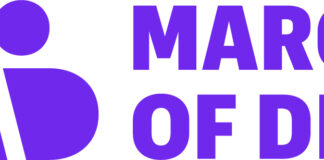WASHINGTON, June 8, 2020 /PRNewswire-HISPANIC PR WIRE/ — Today, the National Alliance for Public Charter Schools released a new policy brief, “Charter School and Student Access to Devices and the Internet,” an analysis of schools and communities facing the greatest barriers in accessing remote learning opportunities. The report also calls for $243 million in annual resources necessary to bridge the gap in digital access. When schools closed due to the coronavirus pandemic, nearly every K-12 student in America was thrust immediately into distance learning, positioning many low-income families without access to devices and high-speed internet connections at a disadvantage. Without relief aid from Congress, the digital divide has strong potential to exacerbate achievement and attainment gaps based on income and race.
Key Findings from the Briefing Include:
- Approximately 9 million students in the U.S. lack access to the internet or devices.
- More than 1 in 5 charter school students and roughly 1 in 8 district school students are in a school located in a low‑access connectivity tract, suggesting that charter school students are 60% more likely to be in a school located in a low‑access census tract.
- The estimated cost to close the digital divide gap in charter schools is $243 million.
- In 31 of the 44 states with charter schools, 20% or more of charter school students lack connectivity.
- The top 50 cities for low connectivity account for more than 50% of all the charter school students facing connectivity challenges.
“The spring semester came and went for millions of U.S. students without access to the internet or a digital device. We cannot afford for our most vulnerable students to remain ill equipped this fall. Failing to close the digital divide will relegate low-income families to a modern dark age, left without the digital resources available to the more affluent,” said Nina Rees, president and CEO of the National Alliance for Public Charter Schools. “Substantially more help for K-12 students must be a part of the next phase of federal relief from Congress. Students and families are counting on policymakers to shrink the digital divide before students suffer the consequences of another lost school year.”
Using the most recent American Community Survey data, the National Alliance estimates charter schools need $243 million to address unmet device and connectivity needs. Given that a higher percentage of charter school students experience low access to connectivity, and that incidence is magnified in specific states and cities, lawmakers must appropriate funds accordingly to bridge the gap. Federal, state and local governments as well as philanthropists will also need to target funds to the schools and students with the greatest needs, especially charter schools, which are disproportionately located in low-access census tracts.
For media inquiries please contact Shaelyn Macedonio at [email protected]. For more information please visit https://www.publiccharters.org/.
SOURCE National Alliance for Public Charter Schools





